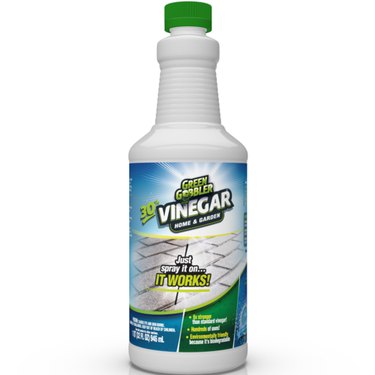Quck answer
Weeds can be a nuisance in your garden, but you don’t need chemical weed killers to get rid of them. There are several organic and natural methods you can use to control and eliminate weeds. One option is to manually remove them by pulling them out from the root. Another method is to use organic weed killers made from vinegar, salt, or boiling water. These natural alternatives can be just as effective as chemical herbicides, but without the harmful effects on the environment and your health. Remember to be persistent and consistent in your weed control efforts to keep your garden weed-free.
Many commercially available weed killers contain harmful chemicals that can be dangerous to pets, humans, and the environment. Although these synthetic weed killers are effective, they can be considered poisons. They remain in the soil long after they have killed the weeds, they can contaminate water supplies by running off into lakes and streams, and they can render compost useless for mulching or soil amendment. On the other hand, organic weed killers are made from natural substances or use non-chemical techniques to kill or remove weeds. Organic methods provide a safer alternative to using toxic chemicals in your garden, yard, and outdoor areas, as they do not contain synthetic and harmful chemicals, but instead use natural substances to eliminate weeds and other plant life. However, like many synthetic chemical weed killers, some organic herbicides, whether homemade or store-bought, can also harm non-target plants. When purchasing an organic weed killer, it is important to read the package directions and warnings carefully, and when making your own concoctions, be cautious to protect the rest of your garden and lawn plants.
Hot Water Weed Wilter

Image Credit: Steve Cicero/The Image Bank/GettyImages
One of the simplest natural methods to get rid of weeds does not require a trip to the store, as hot water is the only ingredient needed. Boiling water is an effective herbicide for weeds that grow through cracks in the driveway, between pavers, or in a garden bed where no other plants are present. This method is especially useful for tough weeds that are difficult to pull by hand in areas with cement or brick pavers.
Simply boil water in a tea kettle and pour about 1/4 cup of hot water over each weed, making sure to soak the leaves and stem. Wear protective shoes and take your time to avoid splashing boiling water on your skin. Within a day or two, the weeds will visibly die, and you can either let them dry up or manually remove them.
Commercial Organic Herbicides

Image Credit: Avenger Organics
Commercial products labeled as organic herbicides are made from natural compounds instead of synthetic chemicals. Similar to synthetic herbicides, organic herbicides can be formulated for specific purposes in weed control. Some are designed to prevent weeds from growing, known as pre-emergent herbicides, while others are used to kill existing weeds. One organic compound used as a pre-emergent treatment is corn gluten meal, which is a byproduct of corn milling. Corn gluten meal inhibits weed root growth during germination and is commonly used on lawns and in certain fruit and vegetable gardens.
Some organic herbicides utilize citrus oil as a key ingredient for weed control. D-limonene is an oil extracted from citrus fruit peels. It is effective in killing weeds and is also commonly used in solvents like paint strippers. As an herbicide, d-limonene strips away the protective waxy covering of plants, leading to their death. D-limonene works well on grasses, broad-leafed weeds, and various other weed types. Even when purchasing a product labeled as “natural” or “eco-friendly,” it is important to carefully read the herbicide label to ensure that it effectively kills the target weeds.
How to Eliminate Weeds Using Vinegar

Green Gobbler Vinegar
Image Credit:
Green Gobbler
Household vinegar, which contains approximately 5 percent acetic acid, can be utilized undiluted to eradicate various types of weeds. The acid eliminates moisture from the weed, resulting in its withering and demise. The addition of one ounce of dish soap per gallon of vinegar enhances the spray’s adherence to the plant leaves, making this herbicide even more potent. Vinegar can also kill other plants, therefore it should only be used in areas such as cracks between driveway slabs or places where unwanted weeds sprout up—away from more desirable plant life. If using vinegar near other plants, it is important to precisely target its application by using a hand spray bottle at close range.
If regular vinegar fails to eliminate the most stubborn weeds, opt for horticultural vinegar, which is up to six times stronger than the distilled vinegar found in grocery stores.
- In a sprayer or spray bottle, mix four parts horticultural vinegar to one part water.
- Spray the leaves of both young and mature weeds during the hottest part of the day, as the sun’s heat can expedite the weed-killing process.
- Wait for a day or two, then reapply if necessary.
Tip
Some weed species, such as poison ivy, are more resilient to elimination when they are young due to their thick cuticles. Vinegar more easily penetrates larger leaves on these types of weeds.
Even if a weed appears completely wilted, it may still bounce back to life because of stored energy in its roots. Some weeds may even resprout nearby from root runners, so it is advisable to check the problem area at least once a week during the growing season and reapply vinegar as needed.
Warning
Horticultural vinegar is potent enough to cause skin burns and eye damage. It is important to wear safety goggles, protective clothing, and shoes when working with such a strong acetic acid product.
Manual Weed Removal

Image Credit:
lucentius/E+/GettyImages
Manual weed removal is a term used to describe the act of digging weeds out by hand. It may not be the easiest method to eliminate weeds, but it is almost always the most cost-effective and often the most efficient—especially when the entire root system is removed. If it seems like too much work, rest assured that once a routine of hand weeding is established, it becomes progressively easier as there are fewer and fewer weeds producing seeds. Additionally, weeding by hand provides good exercise and is a wonderful way to stay connected with your garden.
Removing weeds by hand is most effective when the soil is damp or loose, rather than compacted, and when the weeds have shallow roots that can be easily pulled out. Several basic tools can greatly facilitate the process of manual weed removal.
- A tool called a dandelion weeder, resembling a long screwdriver with a notched blade at the end, can be used to remove stubborn weeds with deep roots. This tool is particularly effective for weeds that tend to break when pulled out. To use it, insert the blade along the stem of the plant, grab the plant with your other hand, and then wiggle the weeder to pry out the weed, including its root.
- A garden hoe is also useful for fighting against weeds. A standard long-handled hoe easily cuts through weed stems. Hoes come in various styles and shapes, so choose one that is most suitable for the types of weeds you are dealing with. Some hoes have wider or narrower blades designed to go beneath mulch or sandy soil, while others are specifically made to chop through tough plant matter. Handheld chopping hoes are also great for precise work around plants. The best way to use a hoe is to cut the weed’s stem at ground level, so make sure to keep your hoe sharp.
- A weeding knife is another tool that you will find useful after using it a few times. This tool looks similar to a multi-purpose painter’s tool and has a stiff scraper-like blade. Use a weeding knife to remove weeds from narrow spaces between structures or cement, or between pavers. It is also strong enough to chip away hardened clumps of dirt that hold a weed in place.
- A weed popper, also known by different names depending on the manufacturer, such as a step-and-twist weeder or a stand-up weeder, is a tool that operates using sharp prongs at the end of a staff. The staff is driven into the soil around the weed using foot pressure. A quick twist separates the weed’s root from the soil, and then lifting the staff and tapping the handle drops a plug of soil and weed into a refuse bucket. Weed poppers are especially useful for removing long-rooted dandelions from lawns. The plugs of soil removed by the tool also help aerate the lawn.
Some perennial weeds have strong, twisting roots that are difficult to completely remove by hand. For example, quackgrass can only be permanently removed by loosening the soil by hand and carefully extracting every piece of root. Removing weeds like this requires patience and may involve a two-step process—mechanical extraction followed by the use of vinegar or another organic herbicide to kill any remaining shoots.


